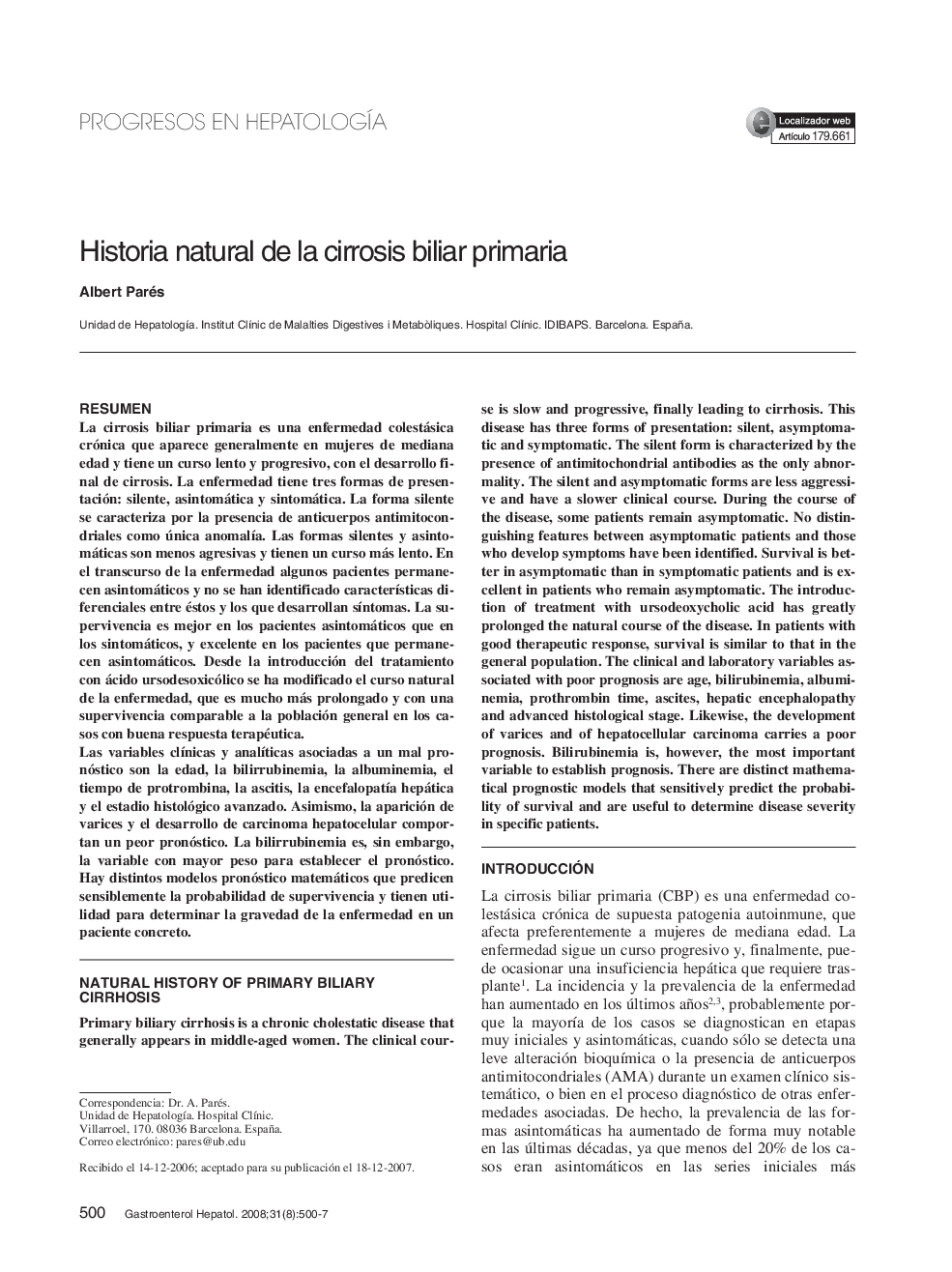| Article ID | Journal | Published Year | Pages | File Type |
|---|---|---|---|---|
| 3288724 | Gastroenterología y Hepatología | 2008 | 8 Pages |
Abstract
Primary biliary cirrhosis is a chronic cholestatic disease that generally appears in middle-aged women. The clinical course is slow and progressive, finally leading to cirrhosis. This disease has three forms of presentation: silent, asymptomatic and symptomatic. The silent form is characterized by the presence of antimitochondrial antibodies as the only abnormality. The silent and asymptomatic forms are less aggressive and have a slower clinical course. During the course of the disease, some patients remain asymptomatic. No distinguishing features between asymptomatic patients and those who develop symptoms have been identified. Survival is better in asymptomatic than in symptomatic patients and is excellent in patients who remain asymptomatic. The introduction of treatment with ursodeoxycholic acid has greatly prolonged the natural course of the disease. In patients with good therapeutic response, survival is similar to that in the general population. The clinical and laboratory variables associated with poor prognosis are age, bilirubinemia, albuminemia, prothrombin time, ascites, hepatic encephalopathy and advanced histological stage. Likewise, the development of varices and of hepatocellular carcinoma carries a poor prognosis. Bilirubinemia is, however, the most important variable to establish prognosis. There are distinct mathematical prognostic models that sensitively predict the probability of survival and are useful to determine disease severity in specific patients.
Related Topics
Health Sciences
Medicine and Dentistry
Gastroenterology
Authors
Albert Parés,
